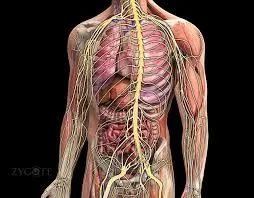Understanding the Anatomy and Functions of the Skin: A Comprehensive Exploration
Unveiling the Skin's Anatomy: Layers, Cells, and Functions Explained
Introduction:
The skin,
the body's largest organ, plays a crucial role in protecting against external
threats, regulating temperature, and maintaining overall homeostasis.
Comprising the epidermis, dermis, and hypodermis, each layer contributes
uniquely to the skin's structure and functions. In this article, we delve into
the intricate details of the skin's anatomy, exploring its layers, cells,
embryology, vascular supply, innervation, and clinical significance.
The thickness of each skin layer varies across body regions, influencing its histological classification. Notably, the palms and soles boast thicker epidermal layers due to the presence of the stratum lucidum, while the upper back, despite a thick dermis, is histologically considered "thin skin."
Example: Palmar skin, with its increased thickness, demonstrates enhanced protection against mechanical stress, showcasing the significance of histological variations.
The epidermis, consisting of five layers—stratum basale, stratum spinosum, stratum granulosum, stratum lucidum, and stratum corneum—undergoes constant renewal and differentiation.
Example: The stratum corneum, responsible for our body's initial immune defense, highlights the critical role of the skin in protecting against pathogens.
Cells of the Epidermis:
Various cell
types populate the epidermis, including keratinocytes, melanocytes, Langerhans'
cells, and Merkel cells, each contributing uniquely to skin structure and
function.
Example: Melanocytes, responsible for skin pigmentation, showcase the skin's adaptive response to UV radiation, acting as a natural sunscreen.
The dermis, connecting to the epidermis, comprises the papillary and reticular layers housing essential structures like sweat glands, hair follicles, and sensory neurons.
Example: The dermal vasculature's role in temperature regulation emphasizes the skin's dynamic response to environmental changes.
Hypodermis:
The deepest layer, or hypodermis, features adipose lobules and skin appendages, contributing to insulation and support.
Example: The hypodermis acts as a vital energy reservoir, emphasizing its role beyond structural support.
Structure and Function:
The skin's
multifaceted functions include acting as a barrier, regulating temperature, and
serving both endocrine and exocrine roles.
Example:Vitamin D production in the epidermis, influenced by UV light, showcases the skin's ability to contribute to overall body homeostasis.
Embryology:
The
development of the skin, derived from ectodermal and mesodermal tissues,
highlights its intricate origin.
Example: Neural crest cells migrating into the epidermis exemplify the coordinated processes shaping the skin during embryonic development.
Blood Supply and Lymphatics:
The skin's
vascular network, crucial for temperature regulation, operates through two
plexuses, influencing blood flow control.
Example: The autonomic nervous system's role in vasodilation and vasoconstriction showcases the skin's adaptive response to temperature changes.
Somatic and
autonomic nerves innervate the skin, governing sensory perception and various
physiological responses.
Example: Nociceptors and Merkel disks illustrate the skin's diverse sensory capabilities.
Arrector pili muscles, affecting hair follicles and sebaceous glands, highlight the skin's dynamic response to stimuli.
Example: The contraction of arrector pili muscles causing goosebumps showcases an immediate physiological response.
Physiologic Variants:
The constant
process of cell division, desquamation, and shedding elucidates the dynamic
nature of the skin.
Example: The breakdown of desmosomes during desquamation emphasizes the importance of controlled cell turnover.
Surgical Considerations:
Understanding
Langer's Lines aids in minimizing scarring during surgical incisions.
Example: Surgeons aligning incisions with Langer's Lines showcase a strategic approach for optimal wound healing.
Skin plays a pivotal role in diagnosing spinal injuries, immune system disorders, and various cancers.
Example: Squamous cell carcinoma's association with UV damage emphasizes the preventive role of sun protection.
Other Issues:
The skin's
microbiome, composed of diverse microorganisms, underscores the importance of
skin health in preventing infections.
Example: Alterations in the skin barrier can lead to infections, showcasing the delicate balance of the skin's ecosystem.
Conclusion:
The skin's
complexity extends beyond its protective barrier, involving intricate cellular
interactions, dynamic physiological responses, and clinical implications.
Understanding the skin's anatomy and functions provides valuable insights into
maintaining its health and addressing potential issues.












Comments
Post a Comment